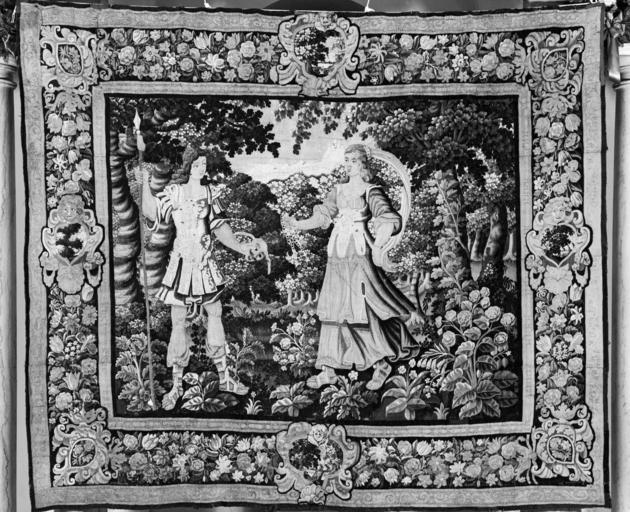MAKE A MEME
View Large Image

| View Original: | Flemish_-_Scene_from_the_Story_of_Cephalus_and_Procris_-_Walters_8230.jpg (1800x1462) | |||
| Download: | Original | Medium | Small | Thumb |
| Courtesy of: | commons.wikimedia.org | More Like This | ||
| Keywords: Flemish - Scene from the Story of Cephalus and Procris - Walters 8230.jpg From the Middle Ages to the 18th century large tapestries were used as decoration and insulation in the homes of the wealthy especially in northern Europe Flanders was the center for tapestry weaving in Europe in part because of the important local wool industry Greek and Roman myths interpreted as moral lessons were popular subjects The myth of the huntsman Cephalus and his wife Procris was presented as a parable of the misfortunes caused by a lack of marital trust and fidelity According to the Roman poet Ovid 43 BC-AD 17 in The Metamorphoses Cephalus is urged by a goddess to test the faithfulness of his wife He goes to her in disguise and attempts to seduce her When she begins to yield he reveals himself by removing his mask The first tapestry depicts this moment In the second the couple reconciles and Procris gives her husband a magical dog and spear that Artemis goddess of the hunt had given to her In the third scene Cephalus accompanied by a nymph takes the dog and spear with him to hunt a stag Procris grows suspicious that Cephalus is being unfaithful and follows him into the forest Hearing her movements in the bushes Cephalus mistakes her for a wild animal and accidentally kills her with his spear In the fourth scene Cephalus cradles the dying Procris in his arms ca 1650 70 wool cm 304 2 362 9 accession number 82 30 17748 Mrs Trafford P Klots Baltimore date and mode of acquisition unknown Walters Art Museum Gift of Mrs Trafford P Klots in memory of Mr and Mrs Alfred P Klots and Trafford Klots 1983 place of origin Belgium Walters Art Museum license Baroque art in the Walters Art Museum Flemish art in the Walters Art Museum Media contributed by the Walters Art Museum needs category review | ||||